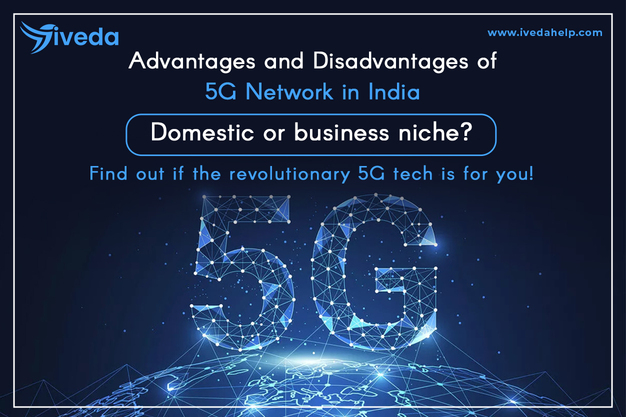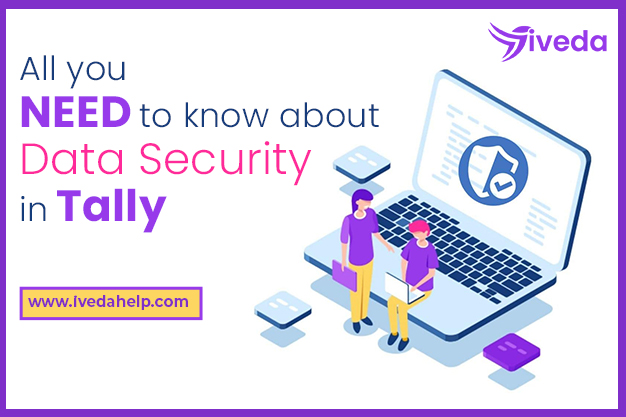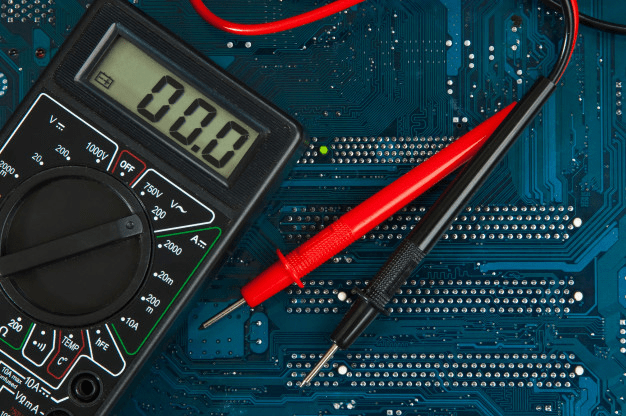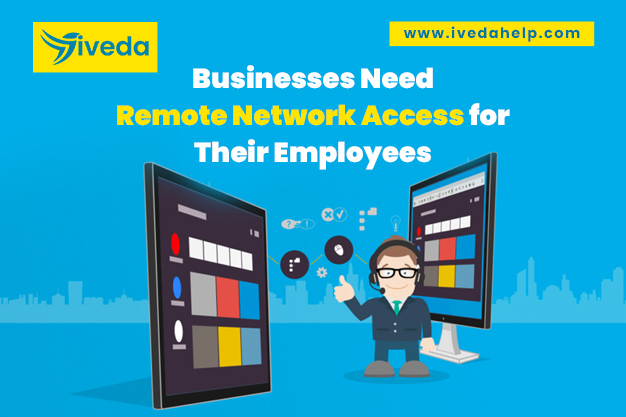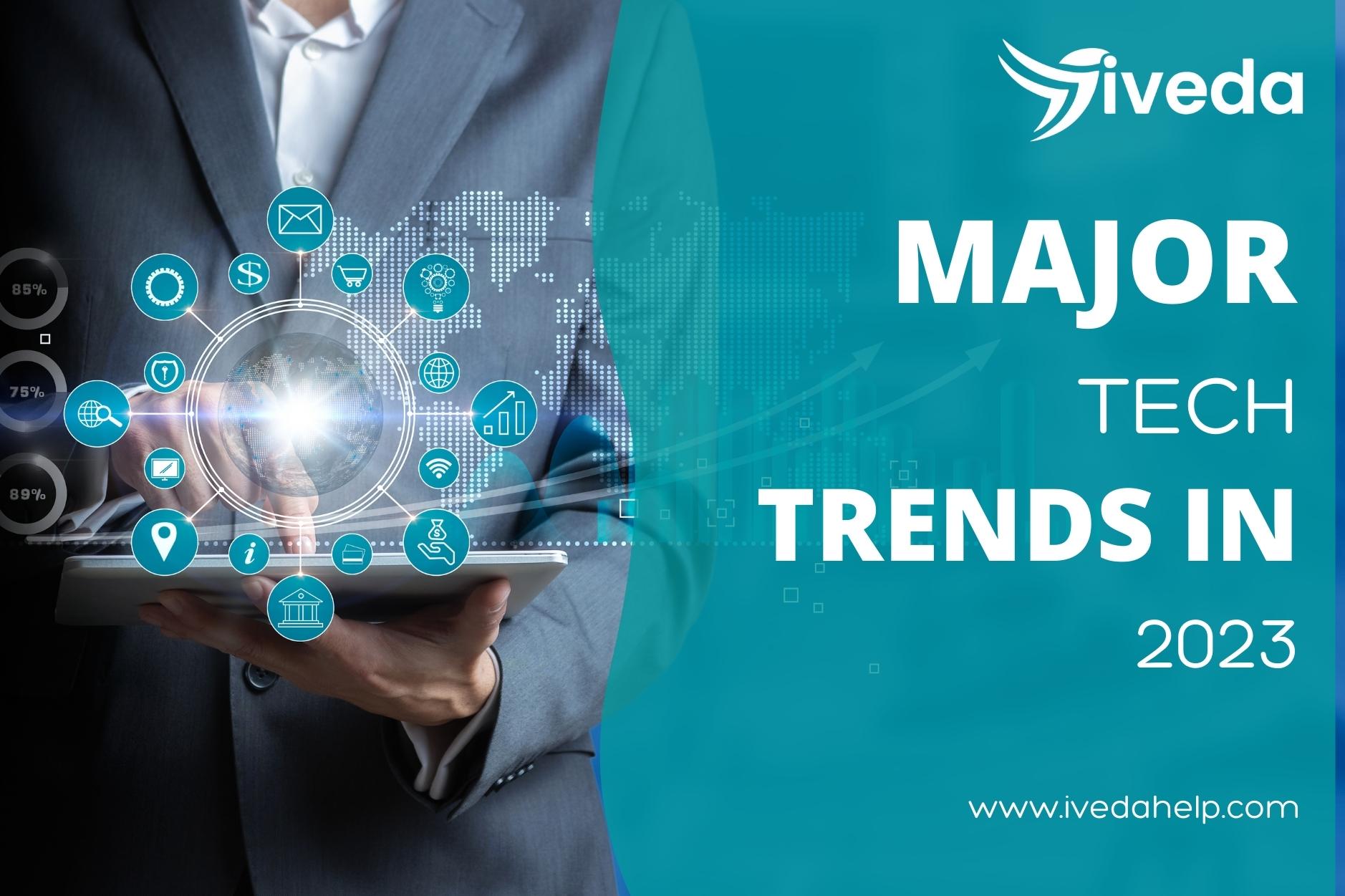Advantages and Disadvantages of 5G Network in India
With the continuously growing need for internet and communication services, companies have a race to develop lightning-fast solutions for internet users. As per the here are more than 4.66 billion users on the internet; these figures account for almost 59.6% of the people on the planet. Most use it for social networking and business operations. The 4G internet was introduced to provide fast and reliable service, and the technology seems to win in the market since its establishment. Even though the technology is widely accepted worldwide, it can still be observed that the users are still looking for better data transfer and exchange speeds. Following such dramatic growth in the market, the companies are coming up with the 5G technology. More than 60+ countries have deployed the 5G network and have been experiencing an exceptional service in terms of lowered latency and high uploading/downloading rates.
Among the benefits of 5G technology are higher peak data speeds of up to 10 Gbps, ultra-low latency, more excellent reliability, massive network capacity, increased availability, and a more consistent user experience. Enhancing performance and efficiency empowers new user experiences and allows for new industries.
How fast is 5G technology?
Before delving into the speed of 5G technology, we must understand the network’s working. First and foremost, it is known that wireless tech works using radio frequencies or spectrum, and the information is carried via air. 5G follows the same setup; however, the best thing about 5G is that it uses higher radio frequency and takes the path where it experiences less cluttering. As a result, the data is transferred in a better way. Talking of the speed till now, we wonder what speed the 5G technology can have.
These higher bands are called ‘millimeter waves’ (waves). These waves were previously unused but have been opened up for licensing by regulators. As the higher bands are faster at carrying information, there can be problems with sending over large distances, and they are easily blocked by physical objects such as trees and buildings. 5G will utilize multiple input and output antennae to circumvent this challenge and boost the wireless network’s signals and capacity.
The technology will also use more miniature transmitters. Current estimates say that 5G will support up to 1,000 more devices per meter than 4G.
5G is designed to deliver data rates up to 20 GBPS. In addition to the above, 5G can deliver lower latency; this accounts for immediate responses exchanged using this tech. It is worth mentioning that speed is a fascinating factor about the 5G tech and its network capacity. The 5G tech can expand into a new spectrum at times; backed up with the Gigabit LTE technology, it can provide the best-in-class experience to the users.
So, I have to buy a new phone for using 5G?
Well, yes, of course. Like the 4G era, you cannot use 4G services on the 3G device. Similar to it, you cannot access the 5G services from a 4G device. So, in case you’re looking for your brand new phone, this is suggested to buy a smartphone that supports the 5G network. In addition, multiple carriers worldwide offer the 5G wireless network. So for now, you have a lot to choose from! More, the merrier!!!
Several new 5G mobile phones are now available that support 5G technology. During the 5G launch timeline, more smartphones and carrier subscriptions will become available as 5G-enabled devices and 5G technology become more mainstream.
Furthermore, vehicles could connect to everything around them, from other vehicles to road infrastructures such as traffic signals. The collected data could enable the traffic lights to react to traffic flow to reduce traffic jams. Furthermore, valuable data could quickly identify the roads in need of repair. Meanwhile, the connectivity of road infrastructure can help monitor traffic flow and raise alerts for potential issues such as debris on the road.
What revolution can 5G bring?
On a global level, 5G technology will empower several sectors. Shortly, 5G will revolutionize how many products and services are provided. Several other applications look set to impact. Fixed wireless access will benefit both domestic, and business as the fifth-generation network will allow for online connectivity to rival fiber broadband, eliminating the need for a landline and bringing improved online access to hard-to-reach areas.
Advantages and Disadvantages of 5G technology
No matter how influential a technology seems, every technology is bound to have some flaws!
Still, the scale can be balanced out. Let’s break it down into significant advantages and disadvantages of 5G technology:
Advantages
-
Impressive speed
-
Easy network availability
-
Better M2M communication
-
Low response time
-
Increased bandwidth
-
Advanced applications areas
Disadvantages
-
Limited geographical availability
-
Less added value for consumers
-
Heating issues with smartphones
-
Less upload to download efficiency
-
Less widespread coverage
-
Broadcast distance
-
Signal interruption out of the line of sight
Advantages of 5G technology
Impressive speed
Concepts like Video buffering become an old school with 5G speed. 5G facilitates uninterrupted browsing and streaming experience. Loading times are shorter! Videos of High Definition can be uploaded and downloaded within a matter of seconds. Sending a heavy video file? No worries with 5G speed!
Easy network availability
5G networks come with a guarantee of a wide range and ease of availability. Especially for emergency usage, having a 5G network sighs relief. Fast and uninterrupted connection is always guaranteed with a 5G network.
Better machine to machine communication
This feature is more advantageous for organizations and businesses than consumers. The automated industry swears by the wonders of 5G technology in their business operations. Self-driving vehicles, wireless communication, augmented reality, traffic coordination, and direct video connections can be well maintained with a 5G network. Even the agricultural industry has gone digital and relies on 5G technology for handling operations, including control measurements and agricultural machinery.
Low response time
Some online operations require quick response time as in online gaming, bidding, rapid-fire quiz, etc. 5G connections provide low response time and enhance online performance.
More bandwidth, fast network
There is a reason why 5G is preferred for unlimited data usage. There is no issue of signals being jammed or interrupted in a crowded space where everyone is browsing or streaming something. Even at large gatherings or fast-moving transportation media, the connection is better and more stable. 5G renders more bandwidth, allowing users to reap multiple benefits with the most negligible lag.
Versatile technology for more advanced applications
5G technology can withstand advanced requirements for new technologies, including 5G live broadcast with ultra high resolution, AI, virtual reality in real-time, improved mobile and Videotelephony, and lots more!
It is inevitable to talk about the cons of 5G technology now!
Disadvantages of 5G technology
Limited geographical availability
Regions under terrains, hills, or rural areas still suffer from 5G network unavailability. As been established before, the technology is advanced and deserves adequate connectivity support.
Less added value for consumers
5G offers excellent Gigabit mobile communication to industries but does not value consumers.
Heating could be an issue with most phones
Considering how fast and efficient the 5G network is, it also overheats the intelligent device. Smartphones experience major heating issues with the 5G network. However, this could be avoided by developing better battery technology that can gel well with hi-tech technology. It could be given the benefit of the doubt here in this manner. Wait for a superior battery to withstand the superior 5G technology!
Unpleasant upload to download ratio
5G provides incredible download speed, around 1.9 Gbps; however, it’s yet to achieve similar greatness with the uploading speed. Nonetheless, 5G is still superior in many ways from its prior versions.
Less impressive widespread coverage
Besides difficult-to-reach regions, areas with lesser population stats also face a shortage of 5G connections. There are certain places where the 5G network is yet to arrive, and the areas with a specific population are being given the privilege to have 5G connections so far. For consumers who live in small towns or remote regions, 5G is still a distant concept. However, this will be likely to change in the coming future.
Broadcast distance is a significant issue
5G is fast, but only up to a particular range. The ultra-fast frequency waves of 5G can cover only a short distance so far. This means as long as you are in the range of the tower, your connection will be superior to others. This is the same for every network, although, with 5G, the broadcast distance is quite limited for now. I keep saying so far because the evolving technology will likely improve future upgrades.
Efficiency depends on the line of sight
As long as the line of sight is well maintained from the tower to the receiving end, the 5G connection stays invincible. Signal blocking remains an inevitable obstacle, though. The signals might get interrupted by landscapes, buildings, or tall structures with the potential of blocking even the range of a high-frequency signal. Hence, there will be an impending need for compatible transmission antennas for uniform network coverage.
Future trends of 5G
As discussed above, 5g will revolutionize the world indifferently or at least every sector connected to the internet. Reflecting on the research conducted by J.P. Morgan, we can foresee the potential of 5G technology and the boom it can bring to the global market. The considered report also explores the various possibilities, including the industrial use cases. As per the study, the adoption of 5G technology will continue to surge in consideration of a peak in 5G smartphone volumes expected in 2022-E. 5G tech will most likely provide all the vital enterprise opportunities that corporates are just beginning to recognize in the forthcoming years. It is also expected that the 5G will exceed $180 billion in North America by the end of the year 2030. Talking more on the research conducted by J.P. Morgan Research, he foresees the future of 5G based on the consumer demand global adoption, sharing market forecasts, and exploring enterprise use cases. Embarking on the given landscape, the adoption of 5G tech has reached nearly 33% of global smartphone volumes in 4Q20, which means an increase from 18% of the mix in 3Q20. The exponential growth was pushed by new launches such as the 5G iPhone, which then witnessed Apple achieve a 47% share of the total share in the 5G smartphone market.
In a nutshell, as we consider the growth of 5G adoption, much like everything, the key parameter will be the consumer demand. It is pretty evident that customers’ data consumption worldwide has nearly tripled; moreover, the customers in the market are now even more interested and willing to pay more for it. It is foreseen that 5G will reach 1 billion subscribers faster than the 4G in the global market.
I heard that you have any questions regarding 5G; please let us know in the comment section.

